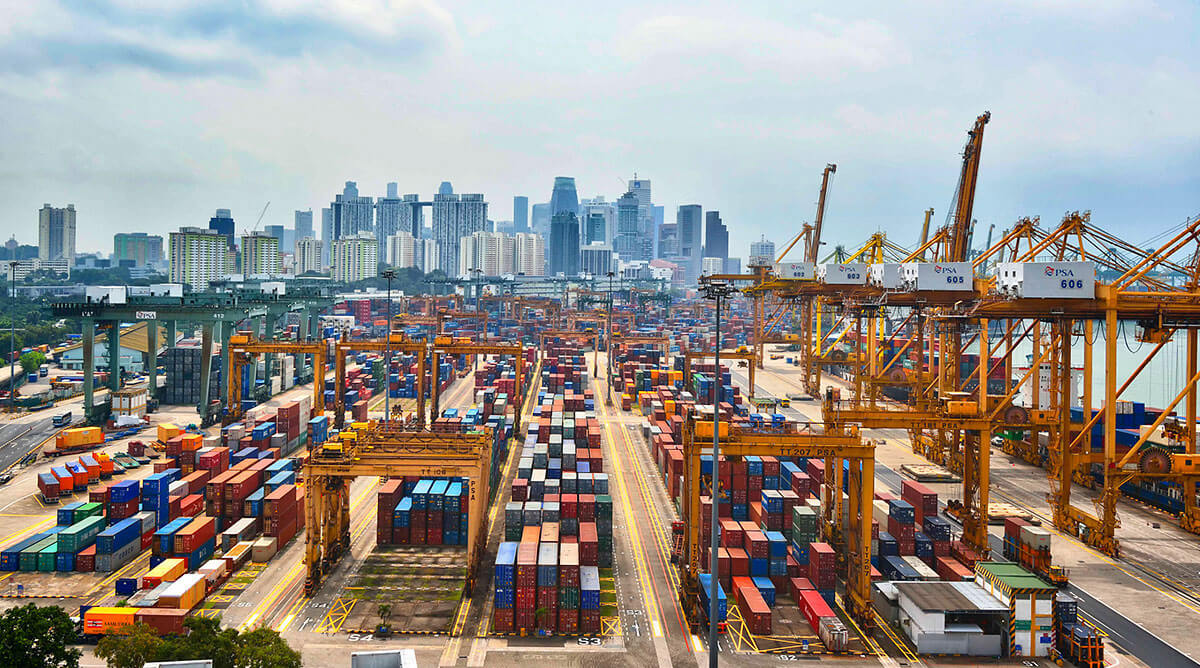Senior Minister of State for Transport and Health Lam Pin Min spoke at the Ministry of Transport's Committee of Supply (COS) Debate today.
Of the various new growth strategies for Singapore's maritime sector he introduced, such as building a "vibrant and innovative maritime sector", and developing a "future-ready skilled maritime workforce", proponents of China's Belt Road Initiative (BRI) might be pleased to know that he brought it up in his talk about Singapore's need to boost its physical connectivity.
Here are some of the highlights regarding the steps Singapore will take to enhance its position as a "key node in the region's maritime network".
Strengthening S'pore's position as China's gateway to Southeast Asia
He said that Singapore can pursue opportunities under China’s BRI.
Under the Chongqing Connectivity Initiative, which is the third G-2-G project between Singapore and China, we have developed the Southern Trade Corridor (STC) – the maritime route linking China’s overland Silk Road Economic Belt and the Maritime Silk Road.
This will strengthen our position as China’s gateway to Southeast Asia, and create new opportunities for our local companies to venture overseas.
He then moved on to say that many local companies are already participating in the BRI.
To tap on growing trade from Western China, PSA operates many ports along the BRI including Qinzhou in the Guangxi-Beibu Gulf, which provides direct access by rail to Chongqing, a gateway to China’s vast inland area.
Local shipping line, Pacific International Lines has similarly invested in logistics facilities in the region, and runs shipping routes between the Guangxi-Beibu Gulf and Singapore.
He added that various ongoing projects such as Pasir Panjang Terminal Phases 3 and 4, as well as the first phases of Tuas Terminal are progressing well, with the former being fully operational by the end of this month.
He also said that investments such as the Next Generation Tuas Port will ensure Singapore's "leading position as a global hub port".
Why strengthen physical connectivity?
Growth in trade and networks in the region will also benefit Singapore.
As the region develops, it is inevitable that our port will face greater competition from alternative ports and trade routes.
Thus, while we are well-placed, we cannot be complacent.
The only way for us to stay ahead is to continue to innovate, and look for new growth opportunities.
Lam also said that with Singapore's strong connectivity, it's in a good position to "contribute to and pursue opportunities under the BRI".
He has recently represented Singapore in Beijing for the Belt and Road High Level Meeting for Health Cooperation from 17 to 19 Aug last year.
[related_story]
China also wants M'sia to become a gateway to Southeast Asia
A string of Malaysian ports have been receiving Chinese investment in the past decade, with the new deep-sea port Melaka Gateway project serving as the nation's effort in a bid to make itself a key component of Beijing's BRI.
Idris Haron, Melaka's chief minister, said in an interview with South China Morning Post that the project is meant to revive its past glory as a world-famous entrepôt 600 years ago:
“Of course I must build a better port than Singapore to convince the ships to call here.
We will be competitors and it will be good for both of us."
He added that his ambition is to see a world-class international port built in Melaka, which would be admired by other developed cities.
A World Bank study shows that a new port on Malaysia's west coast is not necessary as current facilities have not reached full capacity, sparking questions if the project has more to do with strategic rather than commercial interests.
Top image via mot.gov
If you like what you read, follow us on Facebook, Instagram, Twitter and Telegram to get the latest updates.
